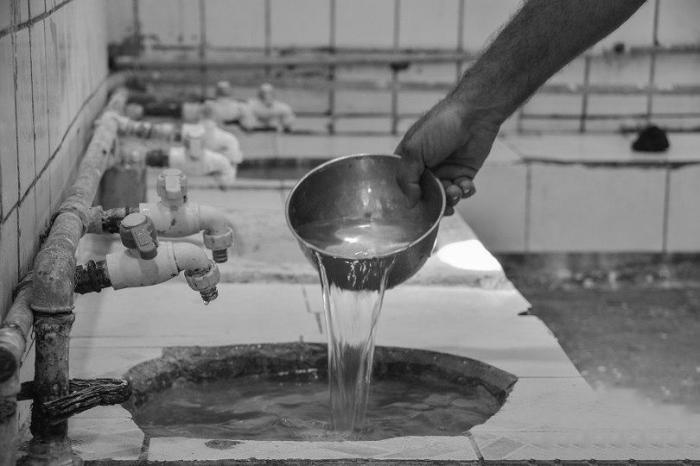The public baths in the holy province of Karbala are a great heritage and a treasure of the most important memories. The city's people used to go to the market bath rather than their houses' bath. The market bath was part of the life of the Karbalai people.
To highlight this topic a little bit more, we had interviews with senior citizens to tell us more about it:
One of the most important subjects mentioned by those citizens was that the holy city of Karbala had a large number of bathrooms that were spread throughout the city, and that the people of Karbala were coming to them for several reasons, including the small sizes of their houses.
These bathrooms were not only for men but also for women. Among those who came to the bathrooms were young men who were preparing for marriage alongside their relatives and friends.
The stages of entering the bathroom start from the gate where the person takes off their clothes to replace them with a number of towels wrapped on their body before entering the bathroom, then they pass a lobby with moderate heat then up to a room with hot water pots and bowls to pour water after the shower, to be going next to the steam room, where they sit for a long period of time, where the sweat and detoxifies come out from the body, then to the massage process and to the soap cleaning and finally the drying process.
The most important baths in Karbala are:
Al-Malih Bath, which was located in Bab al-Salalmah market and it dates back to the tenth century Hijri, the Kubeis bath which is located in Bab al-Taq and was named after the tribe of Kubeis whose their members were coming from Anbar province, Rukn al-Dawla bath, which was located in the Al-Qibla gate of Imam Hussein's holy shrine, and Al-Baghdadi bath, which was located in Baloch Square and was founded at the beginning of the twentieth century.
It is worth mentioning that these bathrooms were spread in the shops of Karbala, which most of them were disappeared and neglected, as well as it was replaced by buildings and modern shops, and there are now only a few in the city.
.................................. .......
Source: Imarat Karbala: by Raouf Al-Ansari.

